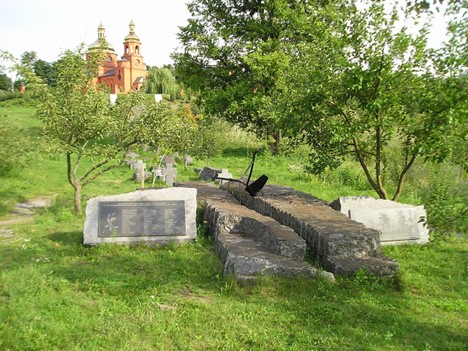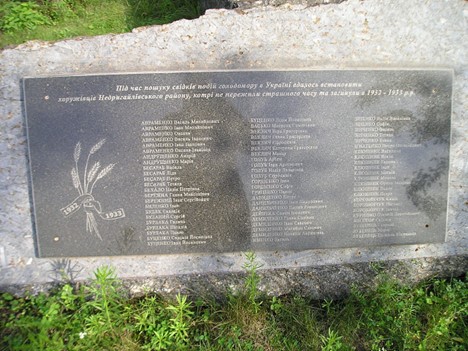- +38(0542)68-77-87
- 116, Kharkivska st., Sumy, Ukraine
- info@el.sumdu.edu.ua
The memorial complex dedicated to the victims of the 1932-1933 famine
Full name of the monument :
The memorial complex dedicated to the victims of the 1932-1933 famine
Region :
Sumy region
Address of the monument :
To the right of the Church of St. Catherine in the village of Khoruzhivka, Romenskyi District
Status :
Historical monument of local significance
Monument installation year (s) (if available) :
2007
Time classification according to the installation epoch :
Ukrainian sovereignty from 1991
Artist(s) :
A. Haydamaka, People's Artist of Ukraine, the sculptors are Petro Drozdovskyi and Mykola Obezyuk
Person/event, object the monument is dedicated to :
real person(s)
Gender :
mixed group
Nationality :
Ukrainian
Components of the monument :
Hight of the sculptures - 1.45 m, bases - 0.49 m,crosses - 0.93 m, 0.61 m and 0.64 m
Material :
mixed materials
Type of art composition :
complex
Artistic approach :
synthesis
Main text, additional text (if available) :
Yes
memorial inscription
Language(s) of the text :
Ukrainian
Narrative commemorates :
Honoring the culture of war victims, including memorialization
The preservation state of the monument at the time of the research :
exists
Institution responsible for maintenance :
Romenska miska rada
Institution’s website :
Free text that contains data valid for interpretation :
A monument of history. Order of the MKT of July 13, 2009 No. 521/0/16-09 (2247-Sm). The memorial complex is located on the slope of the hill. This is a symbolic cemetery of 58 small crosses of gray granite, the outlines of which form a 100-meter huge cross that stretches from the foot of the hill almost to its
the top where the church rises. 89 granite blocks of gray granite are installed near the crosses, symbolizing the graves of the dead. This composition ends with a bronze sculpture
of a five-year-old girl, installed on a rectangular gray granite base above the top of a large cross, already on the very hill, near the church. The girl is depicted full-length, barefoot, in a dress, with her head uncovered. The hair is braided in two braids. Thin hands hold five ears of corn to the chest. Steps lead to the sculpture on both sides. In the foreground of the whole composition, at the foot of the hill, an inverted plow stands on a granite block, as a symbol of death and hunger. Gray granite blocks are placed on both sides of it, on which there are black granite boards with 135 names of the deceased and memorial inscriptions.


